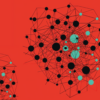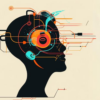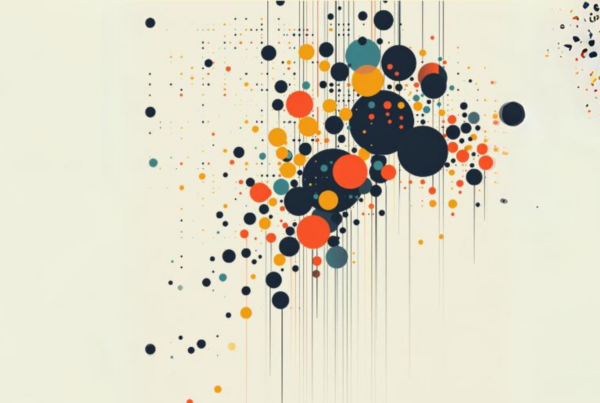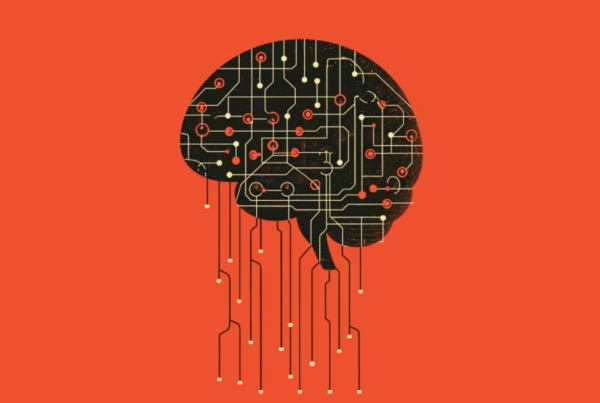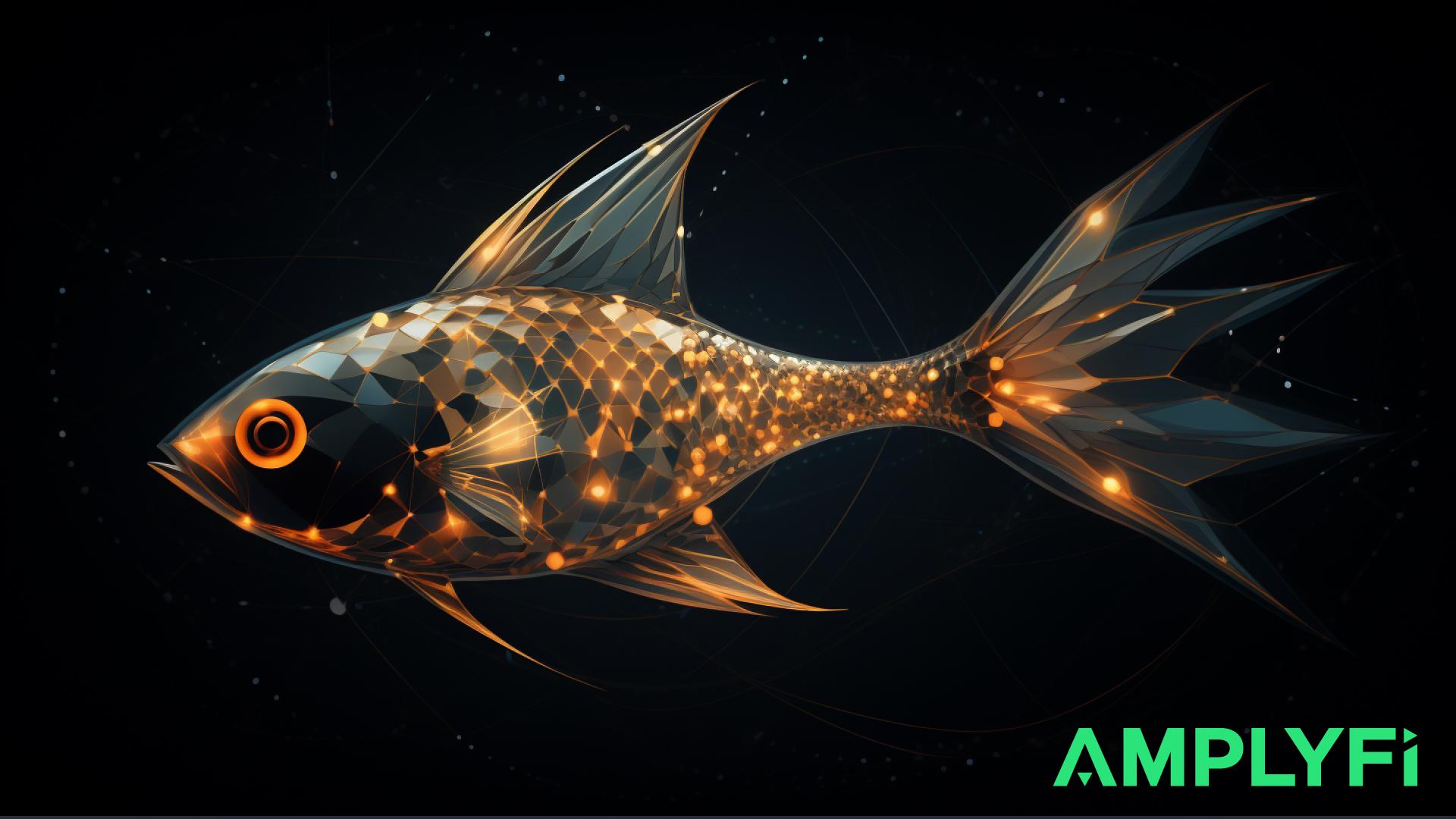
In this blog post, our Machine Analyst reveals the role of AI in revolutionising the fishing industry and tackling overfishing while ensuring a sustainable supply of oceanic protein.
The fishing industry plays a vital role in global protein production, employing 58.5 million people and is projected to generate $610.80 billion in 2023 with an impressive growth rate of 8.2% annually. However, this growth comes with challenges, such as overfishing. Disturbingly, The Word Counts reports that 90% of predatory fish stocks, such as Sharks and Tuna, are fully exploited. Adding to the concern, 5% of marine species are on the red list of The International Union for Conservation of Nature (IUCN), signifying their vulnerability to the risk of extinction.
Artificial intelligence offers innovative solutions to overcome the challenges in the fishing sector. A study by the Nature Conservancy shows that electronic monitoring could improve the efficiency and management of fisheries by 5 to 20%—companies such as Open Ocean Robotics and Ai.Fish offer AI-powered solutions for the fishing industry to enhance ocean surveillance and fishery management. These cutting-edge solutions hold tremendous potential in promoting sustainable fishing practices and safeguarding our marine ecosystems.
Challenges Facing the Fishing Industry
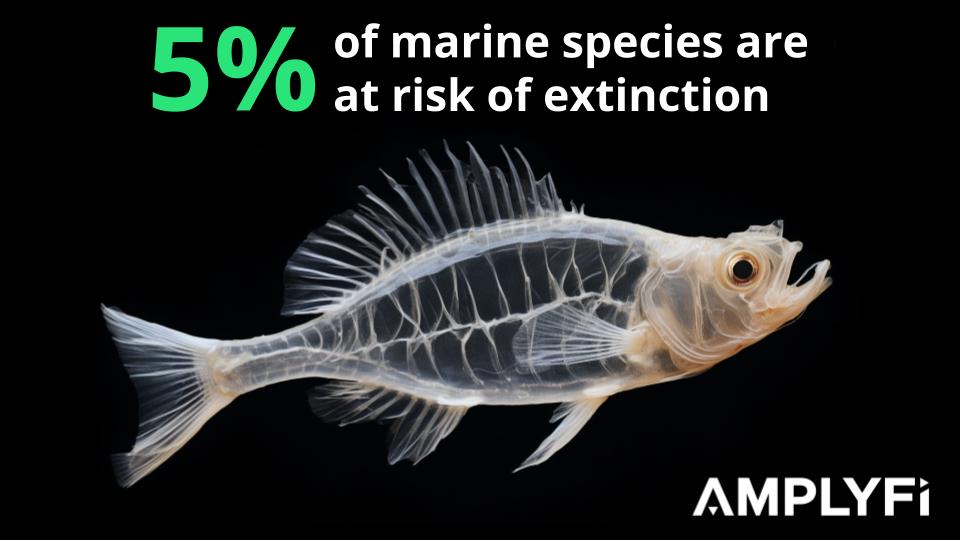
Environmental Challenges:
Three significant environmental challenges face the Fishing Industry:
- Overfishing has led to a substantial decline in fish populations, with nearly 5% of marine species at risk of extinction. This alarming situation is compounded by the fact that fisheries are now catching fish from already depleted populations. Such short-term thinking poses a grave threat to the entire fish industry. Without proactive measures to address overfishing, most species, such as Sharks, Atlantic Halibut and Bluefin Tuna, will go extinct. The conservation of fish populations should be a central focus for fisheries, as their existence is fundamental to the sustainability and future viability of the industry.
- Weather patterns and ocean currents are shifting due to global warming, causing the ocean temperature to rise and forcing the fish species to leave their natural habitat, which affects the fish population and their availability for fishing. According to a study by NOAA fisheries, numerous ocean fish and invertebrate species, including some of the most crucial to the US economy, will be compelled by climate change to migrate northward, consequently increasing the capturing of endangered species and damaging US and Canadian fisheries.
- Oil spills and industrial runoff have contaminated rivers and oceans, accumulating pollutants in aquatic life. It is estimated that 706 million gallons of waste oil are drained into the oceans annually, contributing to 10% of marine pollution. Alarmingly, 1.2 trillion gallons of untreated sewage and industrial waste are discharged annually into US water. This polluted water poses concerns regarding the quality and safety of marine food for human intake. Oil and nitrogenous waste from industries can build up in fish and amplify along the food chain. Humans who consume these contaminated fish are at risk of medical conditions such as kidney failure.
Legal Challenges:
Illegal, unreported and unregulated (IUU) fishing practices threaten the sustainability of the fishing stock. IUU fishing accounts for approximately 11-19% of reported global fisheries production, resulting in a loss of roughly $10-23.5 billion in value. Enforcing fishing regulations such as fishing licences, catch limits, and seasonal disclosure can significantly improve the sustainability of fish production.
Key AI Technologies in the Fishing Industry

Though technologies have driven some of Ocean life’s challenges, AI and Automation should also be considered strong candidates for the solution. Three areas are of particular interest.
Machine Learning:
Machine learning algorithms are deployed in electronic monitoring to make accurate decisions and predictions. For example, xpertSea uses machine learning algorithms to improve the efficiency of shrimp farming practices by delivering precise information on population size and growth rates. Similarly, Pelagic Data Systems employs machine learning in their analytics software to assess data from sensors on fishing boats and satellite surveillance, enabling the detection of changes in fish behaviour and migration patterns. By leveraging machine learning, the fishing industry can make informed decisions, optimise resource utilisation, and promote sustainable practices in fisheries management.
Automation and Robotics:
Robots can perform repetitive tasks accurately and quickly. AI-programmed robots could carry out the processing and packaging of seafood much faster, which reduces labour costs, and eliminates the need for human supervision. For instance, Marel’s RoboBatcher Box uses intelligent batching technology. It can pack and style up to 24 boxes simultaneously at mind-blowing speed and accuracy, which reduces reliance on manual labour and improves productivity while ensuring a more economically sustainable approach to seafood processing.
Computer Vision:
Computer Vision technology helps obtain meaningful data from digital images, cameras and other sensors. SafetyNet Technologies, a UK-based company, offers CatchCam, which uses computer vision to film gears in action. Their footage can be used for automated fishing activity monitoring and surveillance. Monitoring fishing vessels by automatic video footage can help reduce IUU fishing practices and bycatch.
Using these AI-powered innovative technologies in the fishing industry can help achieve sustainable fish production and minimise the risk of extension for endangered species.
Leading Organisations Using AI in Fisheries
Three organisations who are driving sustainability within the fishing industry include:
| Name | About |
| Saildrone, | A US-based company that designs, manufactures and operates autonomous vehicles, or ocean drones, known as “sail drones.” |
| VIAME | VIAME is a leading technology research and development company specialising in advanced computer vision and machine learning methods for underwater video and image analysis. Its main objectives are to help with environmental monitoring, fishery management, and conducting scientific research. |
| Pelagic Data Systems | PDS enables autonomous tracking of any size and type of sea vessel possible. Their tracking system can monitor vessel behaviour following conservation measures and area-specific regulations. Their traceability system also tracks fish from sea to consumers. |
Conclusion
In conclusion, the application of AI to the fishing sector offers a variety of advantages. AI will improve the fishing industry’s capacity to handle environmental issues, manage resources more effectively, and encourage sustainable practices. By offering valuable answers to problems like overfishing, data analysis, prediction, monitoring and surveillance, AI opens the path for a better future for sustainable fisheries.




